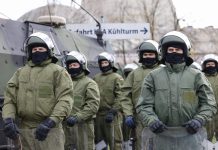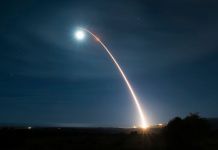Amid murmurs that Russia is abandoning its traditional friend India for its newfound ally China, on December 29, the 22nd and 23rd batches of equipment for Kudankulam Nuclear Power Plant(NPP) that is under construction in Tamil Nadu, were loaded onboard the COMBI DOCK I marine vessel. It will reach India sometime in the third week of this month.
Why Did BJP Leader Subramanian Swamy Lambast PM’s Principal Scientific Advisor Vijay Raghavan?
“The year was not an easy one, however, we never stopped working and it allowed us finishing the loading in accordance with the schedule. In December there is usually a shortage of marine vessels of the required tonnage, but the customer provided one large vessel and both equipment batches were loaded on one ship”, said Vladimir Angelov, Director for projects in India.
This shipment of unprecedented volume – 9503 m3 – includes the equipment indented for Kudankulam NPP Units 3 and 4. Long manufacture cycle equipment for unit 3 includes load and service trolleys that are parts of the polar crane; equipment for unit 4 includes transportation lock; equipment intended for both units includes heat exchangers and locks, air systems of passive heat removal system (PHRS), and fuel pond racks.
Among other equipment for both units are pumps, valves, tanks, pipelines, metal doors, electrical connection modules, filters, evaporation plant equipment, low voltage complete devices cabinets.
It may be noted that power units No. 3 & 4 and 5 & 6 are the second and the third stages of Kudankulam NPP constructed under AES-92 design with VVER-1000 (V-412) reactor type. The technical solutions implemented in Kudankulam design characterize further evolutionary development of NPPs with VVER-reactors of high power and transition to the creation of a new, reliable, safe, and feasible power unit.

New power units of Kudankulam NPP comply with the most up-to-date safety requirements of IAEA. The developer – the technical customer of the facility – is Nuclear Power Corporation of India. The general designer and supplier of equipment is ASE EC JSC, the engineering division of Rosatom, the Russian company that specializes in offering energy solutions across the nuclear supply chain.
It possesses a wide range of assets, including assets in the design, construction, and operation of nuclear power stations, uranium mining, conversion and enrichment, the supply of nuclear fuel, decommissioning, spent fuel storage and transportation, and safe nuclear waste disposal.
Currently, power units No. 1 & 2 of Kudankulam NPP are operating at the capacity established by the operation schedule. Kudankulam 1 was connected to the power grid in October 2013 and unit 2 in August 2016. Overall, Kudankulam is expected to host six Russian VVER-1000 reactors with an installed capacity of 1000MW each.
Apart from the six units at Kudankulam, India and Russia decided during the October 2018 visit by Russian President Vladimir Putin to establish six additional units in the country, in which there will be an increased level of Indian localization (indigenous content).
Though the sites of these new units have not been identified as yet, Russia declared in September 2019 that it is planning to construct more than 20 nuclear power units in India in the next two decades. The announcement came after Indian Prime Minister Narendra Modi arrived in Vladivostok for the 20th annual summit meeting.
“Russia and India today signed memoranda of understanding (MOUs) in various sectors, including civil nuclear and LNG,” said President Vladimir Putin, adding, “Regarding the Kudankulam nuclear power plant, the first and second units are working. The third and fourth are under construction. In addition, we have also decided to set up more than 20 Russian-designed nuclear units in India in the next 20 years.”
Importantly, Russia is equally engaged with India with the idea of joint collaborations in setting up atomic plants in third countries. According to Venkatesh Varma, India’s Ambassador to Russia, the two countries are discussing the construction of power plants in Africa as the next stage in their cooperation in nuclear energy.
As the #Year2020 comes to an end, we revisit at the 20 years of Extraordinary #Friendship between #Russia & #Indian@PMOIndia @MEAIndia @DrSJaishankar @IndianDiplomacy @RusEmbIndia @mfa_russia @PIB_India @DDNewslive @RT_com @DDIndialive @tassagency_en @ANI @rianru pic.twitter.com/YEcphMlOjC
— India in Russia (@IndEmbMoscow) December 29, 2020
“Russia already has agreements on this topic with a number of African countries, Ethiopia is one of them, as well as with several countries in the Middle East.
These will be Russian projects, but with the participation of India. Negotiations are on-going at the initial stage, but we hope that this will be a new era of cooperation between Russia and India in the field of nuclear energy. This follows the success of Russian-Indian cooperation in Bangladesh,” Verma has told Russian news agency RIA Novosti.
It is to be noted that India and Russia are already collaborating in a project to build two VVER-1200 units for the Bangladesh Atomic Energy Commission at Rooppur, on the eastern bank of the river Ganges in Pabna district. Unit 1 is scheduled for commissioning in 2023, the second in 2024. The project involves Russian technology and Indian experts.
This apart, Rosatom has publicly expressed interest in jointly developing a floating nuclear power plant with India, alongside other small and medium-sized reactors.
Nikita Mazein, vice president of Rosatom Overseas, believes that remote coastal areas of India could be served by small-scale reactors like the ones the company is currently developing, as well as by a floating nuclear plant, the first of its kind in the world, that Rosatom commissioned in 2019 near North-Western Siberia.
It may be noted that the Russian nuclear industry, which completed its 75th anniversary in 2020, is a key sector of the Russian economy. With India committed to increase the share of renewable energy in its energy basket to 40 percent by 2030, augmenting the production of nuclear energy is also an Indian priority.
India is expecting to increase nuclear energy production to 14.6 GW by 2024 and to 63 GW by 2032. Thus nuclear cooperation with Russia is an important Indian policy. It is all the more so now that Russia has responded positively to the Modi government’s ‘Make in India’ initiative under which some vital components of the nuclear plants are being increasingly manufactured in India.
All told, Russia never hesitates to transfer its most sophisticated technology to India. It is Russia, which gives its nuclear submarines on lease to India. It is Russia, which has given fighter aircraft to India even before their induction into the Russian Air Force. It is Russia, which has unhesitatingly cooperated with India in its march towards becoming a major space power.
And it is Russia, which has unhesitatingly established nuclear power stations in India, something that cannot be said of the United States even after the conclusion of the civilian nuclear deal.
Of course, in today’s world, nothing is free and Russia has its own reasons to ensure that India remains its close ally as well. Russia, of late, might have increased its ties manifold with China, India’s principal strategic competitor. But then the fact remains that Russia needs India as much as it needs China.
Indian market still is the largest for Russian arms. India still buys 60 percent of its defense items from Russia. Likewise, India might have improved its equations with the United States, of late. But then the fact also remains that India needs Russia as much as it needs the United States.
Follow EurAsian Times on Google News




